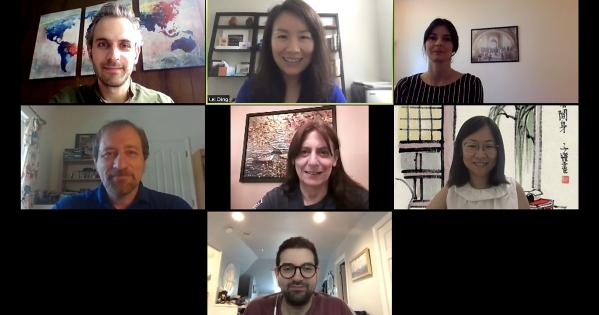Meet the Machine Learning Squad

Machine Learning has become an important feature of everyday life. It is there to recommend news articles and movies, it answers your phone and directs you to the service you want, it informs governments of what to do in the face of Covid-19 and performs medical diagnoses. It helps insurance companies determine risk groups and banks predict which customers will repay their loans. It powers Alexa and Amazon Echo. It is the technology behind self-driving cars.
Recognizing the importance of the field, American University invested significant resources by hiring faculty members in this area. It all started with Professor Baron in Statistics and Professor Xiao in Computer Science. Soon after came Professor Barouti in Statistics and Professor Japkowicz in Computer Science, followed by Professor Boukouvalas in Statistics and our two new additions: Professors Ding and Corizzo, both in Computer Science.
In parallel with hiring the “Squad,” the university developed programs (BS/MS) geared at providing a practical education in data science to interested students. As a result, the departments of Mathematics and Statistics and Computer Science are offering a plethora of exciting courses in the field including Statistical Machine Learning, Data Mining, Advanced Machine Learning, Data Science, Regression, and Generalized Linear Models, and courses that apply machine learning to fascinating fields: Deep Learning for Computer Vision, Machine Learning for Cybersecurity, and Natural Language Processing. Coming in 2021-22, will see a new course dedicated to the manipulation of massive data sets using High-Performance Tools and a new Q2 course Data Science Applications. For students interested in getting a taste of programming and machine learning without committing to the field, Introduction to Programming for Data Analysis is available to anyone having fulfilled the Q1 requirement.
Aside from new courses, the arrival of the machine learning squad brought effervescence on the research front. Its members already received several grants from the National Science Foundation, Office of Naval Research, Energetics Technology Center, Department of Defense, and DARPA and are applying for more. Research opportunities abound for undergraduate as well as graduate students who get opportunities to conduct research on topics such as misinformation detection during high-impact events, the identification of biases in the news, and the discovery of rare genomic sequences, among others.
Although each of these professors shares many interests and collaborates on a variety of projects together, they each focus on particular aspects of the field:
Michael Baron is a mathematical statistician, with research experience in sequential analysis, change-point detection, Bayesian inference, and multiple comparisons. He designs experiments on streaming data that minimize the expected cost under the given degree of accuracy. He is known for optimal algorithms that detect sudden changes in the distribution of random data.
Bei Xiao is a vision scientist who investigates how humans and machine algorithms make inferences of objects’ material properties from images and videos using human psychophysics, computer vision, machine learning, and VR/AR (virtual reality/augmented reality) techniques. Recent projects include the unsupervised learning of translucent material properties from images, estimating the stiffness of cloth from videos, and integrating touch and vision in estimating object properties in VR/AR.
Nathalie Japkowicz’ research interest lies mostly at the confluence of Machine Learning and Defense and Security. Her recent projects include the monitoring of nuclear safety at large events and around nuclear facilities, the detection of cyber threats in automobiles, and the detection of online influence campaigns.
Maria Barouti’s research falls under the area of machine learning and numerical optimization. Her study focuses on data mining by identifying patterns in big data sets as well as developing feature selection algorithms. Her alternative approaches combine system theory techniques and clustering at the intersection of different disciplines such as machine learning and mathematical statistics.
Zois Boukouvalas’ research focuses on the development of interpretable machine learning models and algorithms for the analysis of multi-modal data, by combining aspects from information geometry, mathematical statistics, and numerical optimization. His work involves different types of data, including biomedical images for studying psychiatric illnesses, social and linguistics data for understanding political and social trends, and chemical data for drug discovery and materials design.
Lei Ding conducts research at the intersection of machine learning, security, and privacy. She studies how machine learning can enable better security and privacy, and how security and privacy can enable trustworthy machine learning. Some of her recent work focuses on understanding vulnerabilities in machine learning to preserve digital trust and ensure that machine learning is trustworthy.
Roberto Corizzo’s research focuses on high-performance computing for big data analytics. His research addresses analytical tasks such as sensor data forecasting, time series classification, predictive modeling, and feature extraction tailored to real-world applications in fields such as energy, industry, cybersecurity, astrophysics, finance, medicine, and social networks. The goal is to design methods that are capable of simultaneously providing accurate analyses and high scalability.
With its creative energy directed toward the design of innovative solutions to challenging problems in domains spanning human and cyber security, medicine and social interactions, the squad is interacting with the four strategic areas set out by American University President Sylvia Burwell.
